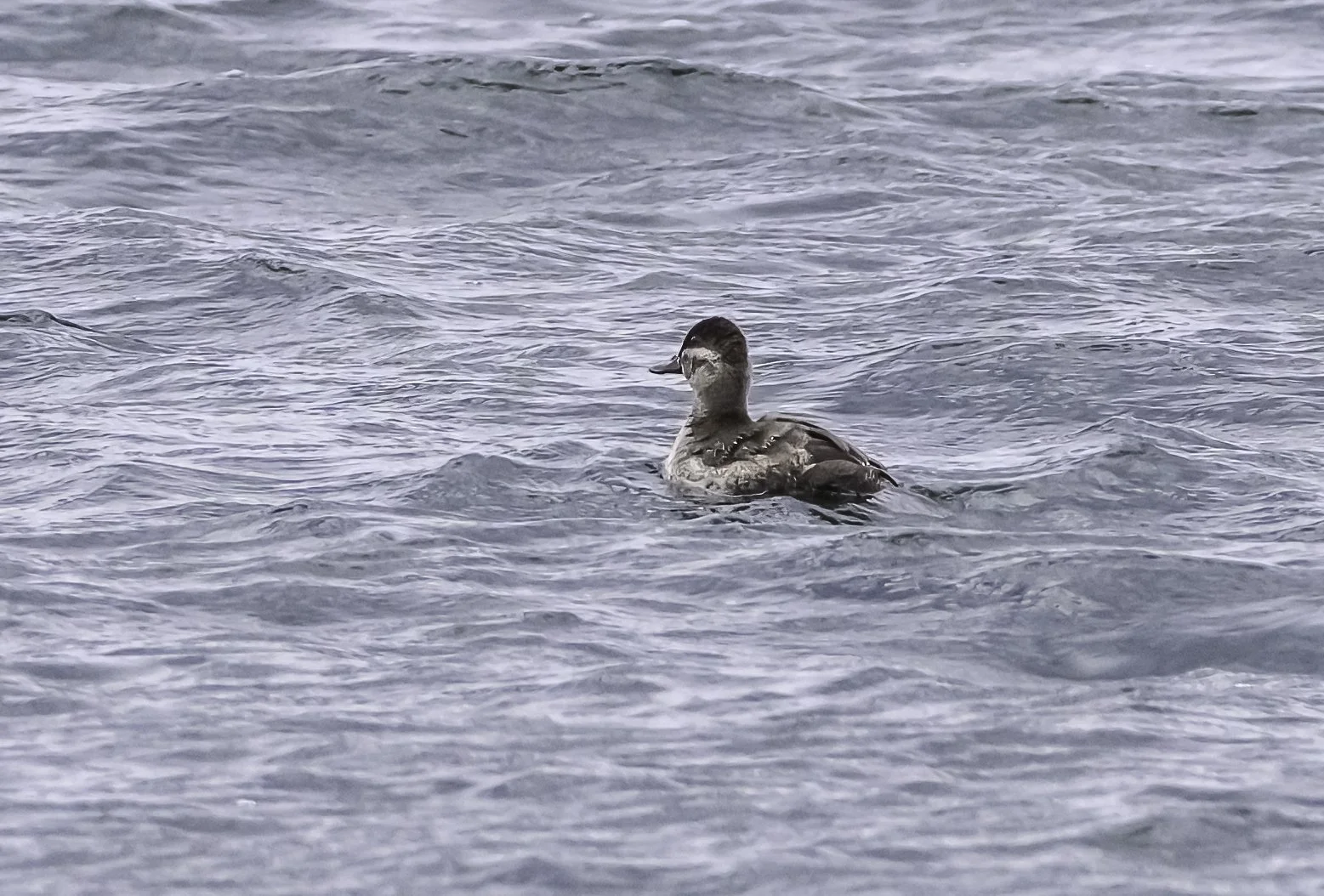Early Winter Waterfowl
Each fall, thousands of ducks migrate through New York as part of their journey to warmer southern habitats. The state’s numerous lakes, rivers, and wetlands provide crucial stopover sites for resting and feeding. Species such as Ruddy ducks and Ring-necked ducks are commonly seen, taking advantage of the rich food supplies to build energy reserves for the remainder of their migration. Observing fall duck migration in New York offers valuable insights the importance of wetland conservation.
Sylvan Lake in Duchess County, New York Nikon Z8 with Z 24-70mm lens @ 64mm 1/800 sec, f/14, ISO 8000
This morning, I drove north into Dutchess County to the town of Beekman. Sylvan Lake is a deep lake averaging 65 feet in depth with a surface area of 116 acres. During the late fall and winter months, this body of water offers safe haven for a variety of migrating ducks as well as wintering residents. I was hoping to find some early migrating ducks along the 1.8 miles of shoreline. The overcast skies and blustery weather did not make for ideal viewing conditions, but I was able to find a small mixed group of Ring-necked ducks and Ruddy ducks.
Mixed group of Ruddy and Ring-necked ducks - Sylvan Lake - 10/31/25
Ring-necked (left) and Ruddy duck (right) on Sylvan Lake
These two species seemed to be quite comfortable bobbing together on the choppy surface of the lake. Both of these ducks are found in the north and western US during the warmer months and many are moving south into the southern US and Central America. Some, however will only migrate as far south as New Jersey according to the Range Maps from Cornell seen below. In fact, both these species are regularly seen here at Sylvan Lake during the winter months as long as there is open water.
Female Ruddy duck on Sylvan Lake
Ruddy ducks can be quite aggressive during breeding season, but now that they are off the breeding grounds, they are more than happy to share their winter grounds with the Ring-necks.
Ring-necked duck - Sylvan Lake - 10/31/25
Ring-necked ducks are a common sight in New York State during their migration and wintering periods. These medium-sized diving ducks prefer freshwater lakes, ponds, and reservoirs with abundant aquatic vegetation. Males are easily identified by their distinctive black head, chest, and back, contrasted by a white ring around their bill and a subtle chestnut ring on their neck. Females are more subdued in color, with grayish-brown plumage and a white eye ring. In this part of New York, ring-necked ducks typically arrive in the fall and remain throughout the winter.
A third species of waterfowl on the lake today was the American coot. A fairly large flock of 40 or more were present, but of course they had decided to stay as far away from me on the opposite side of the lake as possible. So, photographs….not today. This is another species that hangs out on Sylvan Lake throughout the winter, however, so the opportunity for photos in the future is quite possible.
I’ll be looking for more winter waterfowl visitors as the season progresses. We have a number of large lakes nearby as well as the Hudson River. They all serve as wintering grounds as well as staging areas for these beautiful birds and should afford me multiple chances for capturing images of these seasonal residents. Always good to have options and opportunities!






